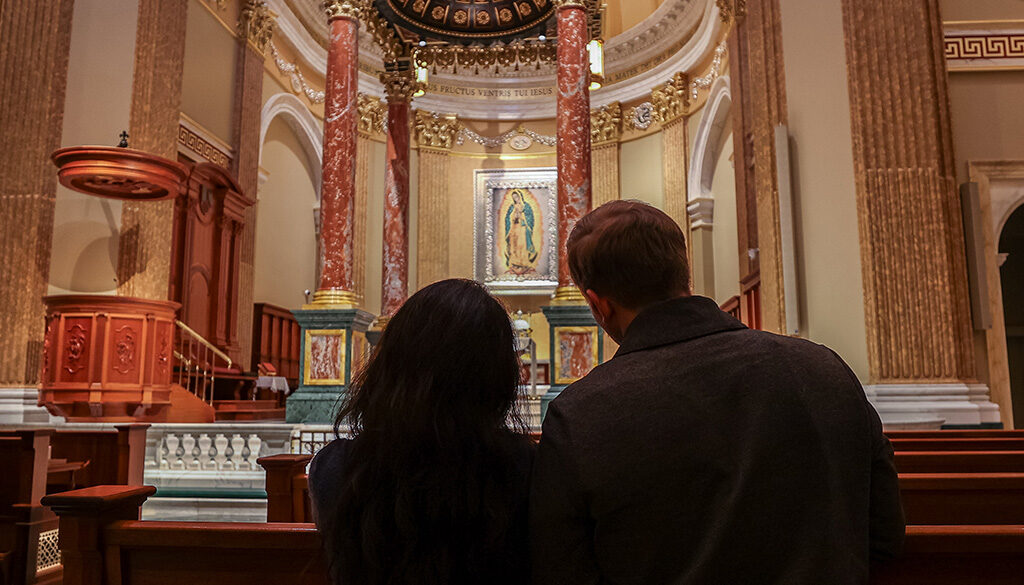Sacrificial Love
For Roman Catholics, Ash Wednesday opens the penitential season of Lent. One of two days when fasting is required(along with Good Friday), it is a day of self-denial, repentance from sins, and the remembrance of death: “Remember you are dust and to dust you shall return.”
Tiers of Importance
This pairing, of course, has an amusing irony on the level of customs and atmosphere. “For Christians the otherworldly always takes precedence … [so] for us Ash Wednesday is going to be primary,” says the Shrine’s Executive Director Fr. Paul Check. “People can go out on another occasion and observe the customs around St. Valentine’s Day.” Some couples, for example, have a celebratory date on the preceding Sunday.
On the other hand, the combination also offers an opportunity to reflect on an element essential both to all forms of love, including married love, and to the penance begun on Ash Wednesday: namely, a spirit of sacrifice.

Self-giving Charity
“We admire people who put something to death in themselves in the service of others,” Fr. Check comments. “The more I deaden—mortification [derived from the Latin for death]—the impulse to selfishness in me, the more alert and aware I am of you and Christ’s presence in you and how I can be of some real service to you in a self-forgetful, self-giving way.” This self-giving charity is the purpose of true Christian mortification: “The Christian understanding of mortification, of penance, whatever form it is, is [to say] no to me, yes to you, yes to Jesus.”
This sacrificial wellspring, so to speak, of love can be found at the roots even of the history of Valentine’s Day. St. Valentine, from whose feast day the modern celebration developed, was an early Roman martyr of whom little is known. Various legends account for his connection with romantic love; one version says that he performed weddings for Christian couples when persecutions made this dangerous. What is certain is that he had lived the sacrificial spirit of love enough to make the sacrifice of his life when the time came.
Stories of Inspiration
Concrete instances of this spirit of sacrifice animating and sustaining married love can be found throughout the Church’s history of saints. At times this sacrifice can take dramatic form, as when newlyweds Sts. Timothy and Maura, in the third century, encouraged each other through martyrdom. More often, these couples live “a hidden heroism that is proper to marriage,” as Fr. Check says, as reflected in the mostly uneventful lives of Sts. Louis and Zelie Martin or Bl. Luigi and Maria Quattrocchi, practicing the daily disciplines of faithfulness to God, to each other, and to their children.
This hidden, daily discipline, vital for the Christian life in all its forms, comes into particular focus during Lent. The season’s austerity, while undoubtedly challenging, has the most joyous of goals: a deeper love of God and neighbor.




